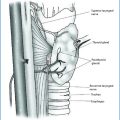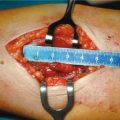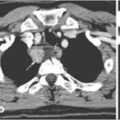Fig. 11.1
Algorithm for surgical treatment in patients with/without contraindication to imaging studies other than ultrasound (see text). BNE, bilateral neck exploration; CT, computed tomography; ioPTH, intraoperative parathyroid hormone; MIBI, 99mTc-sestamibi; MIP, minimally invasive procedure; MRI, magnetic resonance imaging; US, ultrasonography
When there is contraindication to imaging studies other than ultrasound (e.g. in pregnancy), surgical treatment is appropriate: if ultrasound is positive MIP is the treatment of choice (and ioPTH could be an option); if ultrasound is negative bilateral MIP or BNE are the treatments of choice.
When there are no contraindications to imaging studies, 99mTc-sestamibi and ultrasound are indicated. If they are concordant a MIP is the treatment of choice and ioPTH is optional. If imaging studies are discordant or negative, CT or MRI can be considered: if these are positive MIP is the treatment of choice (possibly with ioPTH); if they are negative, bilateral MIP or BNE are the treatments of choice (possibly with ioPTH).
References
1.
2.
3.
Bilezikian JP, Khan AA, Potts JT Jr (2009) Third international workshop on the management of asymptomatic primary hyperthyroidism. Guidelines for the management of asymptomatic primary hyperparathyroidism: summary statement from the third international workshop. J Clin Endocrinol Metab 94:335PubMedCentralCrossRefPubMed
4.
5.
6.
7.
Sharma J, Weber CJ (2009) Surgical therapy for familial hyperparathyroidism. Am Surg 75:579–582PubMed
8.
9.
Kendrick ML, Charboneau JW, Curlee KJ et al (2001) Risk of parathyromatosis after fine-needle aspiration. Am Surg 67:290–293PubMed
10.
11.
12.
13.
14.
Granberg PO, Cedermark B, Farnebo LO, Hamberger B (1986) Surgery for primary hyperparathyroidism: indications, intraoperative decision-making and results. Prog Surg 18:93–105CrossRef
Stay updated, free articles. Join our Telegram channel

Full access? Get Clinical Tree







